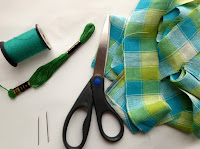
The old Hollywood movie studios would team up an actor & actress to see if they could be successful and then continuously make movies with them. One pair made many successful films together some were dramas and others were comedies. The Hollywood movie couple...
 | |||
| Nick and Nora Charles with their dog Asta |
The series began in 1934 with the release of The Thin Man starring William Powell and Myrna Loy. They played Nick and Nora Charles, a retired private detective, his wife a wealthy heiress and their dog Asta. The two looked great together, they had great comedic timing and they just seemed to have fun.
The first movie was supposedly filmed in 12 days out of the scheduled 14, and released a couple months after the book. The movie became a hit and the audiences began referring to Nick Charles as the thin man instead of the man he was searching for. The studio decided to stick to what the audience liked and so the rest of the films kept the title throughout the series. If you notice in the first film the couple truly enjoy their liquor and drank and drank, until later in the films they become parents. The studio could not have drunk parents, so they toned it down...a little. The couple had such a following that the audience actually thought they were married and so the actors would at times sign in at a hotel room as Mr. and Mrs..
- The Thin Man (1934)
- After the Thin Man(1936)
- Another Thin Man(1939)
- Shadow of the Thin Man(1941)
- The Thin Man goes home(1945)
- Son of the Thin Man(1947)
 |
| Sweet and Witty |
Reporter: Say listen, is he working on case?
Nora Charles: Yes, he is.
Reporter: What case ?
Nora Charles: A case of Scotch. Pitch in and help him.
Nora Charles: How many drinks have you had?
Nick Charles: This will make six Martinis.
Nora Charles: (to the waiter) All right. Will you bring me five more Martinis, Leo? Line them right up here.
How to make a Nick and Nora Martini -
1 1/2 oz. Gin
1/2 oz. Dry Vermouth
Pour into a mixing glass filled with ice and stir well. Strain into a chilled Martini glass garnished with an olive and serve. Drink responsively, please.
Set the tone and buy a vintage Martini set to serve your drinks. I personally don't care for Martinis, but I love a bit of the bubbly. If either one is not an option, a good old Shirley Temple is still fun!
Place a couple of fancy Silver balloons, wear comfortable Silk P.J's and drink a beverage of your choice in fancy vintage glasses. Sit back and have a wonderful, witty line filled night with Nick and Nora Charles...oh, and Asta!


.JPG)
.JPG)
.JPG)
.JPG)


.png)
.JPG)